Discovering female genital cutting in my community
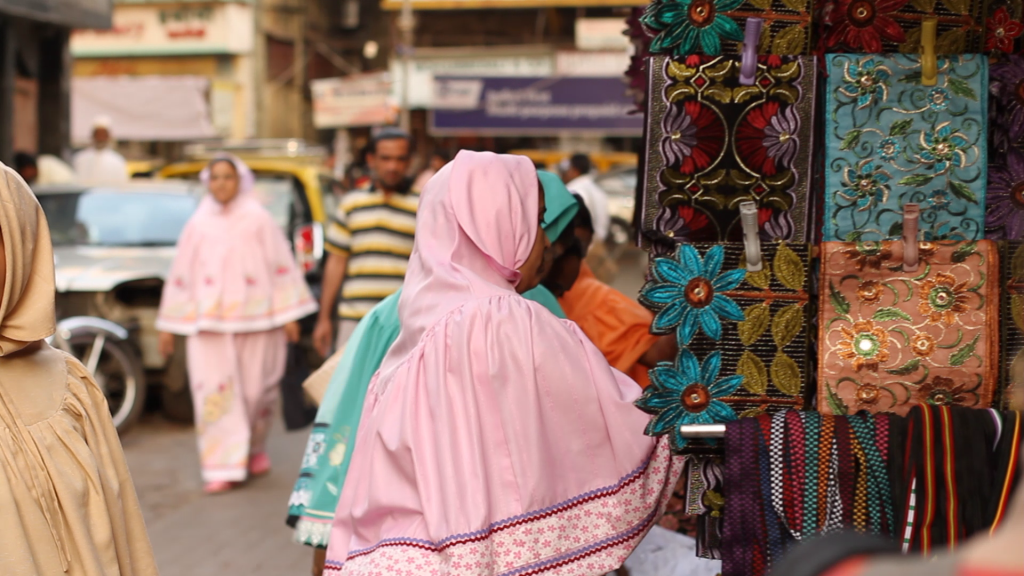
By Mariam Sabir Country of Residence: United States With so many issues in the world that need to be addressed, we have to pick and choose our battles, whether it may be poverty, education, inequality, or gender violence. The majority of people choose something that they can most relate to via personal or cultural experiences. With this first blog I will write about my personal journey of discovering female genital cutting (FGC) in 2011 and why it took me eight years to finally do something about it. My sister is my confidant, as I am hers. I was 17 years old when my sister pulled me aside urgently to talk to me about something she could not fathom. She had just discovered FGC. I was still in high school and did not grasp the gravity of the situation. A few years later, I was sitting in my healthcare ethics course in undergrad and my professor breezed over the topic of female genital cutting. My mind started to spin. This could not possibly be what my sister was talking about? I called her immediately after class and she confirmed it. I was enraged as though I was hearing it and truly understanding it for the first time. It felt like a conspiracy. No one in the community talked about it. How many of my cousins, friends, and aunts had gone through this and had never spoken of it? I was desperate to talk to someone about this. Surely there must be somewhere I could go to get more information. I called the first person that came to mind, my mother. I could sense her discomfort in talking about this subject. She told me it is a Bohra custom, a social norm within our community that people feel compelled to perpetuate without questioning, even by my grandmother as well. My mother admitted that it was a traumatic experience, but did not want to indulge further. I was not satisfied. I called my aunt. My aunt is more liberal and expressive; she writes poetry and is an activist in her own ways. Surely, she would have more to say about this. She told me it was done supposedly to moderate a woman’s sexual urges to prevent premarital or extramarital affairs. To my dismay, this was the end of our conversation. My attempt to gather information seemed like an impossible task. I did not know where to go or who to talk to, so I pushed my thoughts aside until that summer when I went back home to Dubai. I was curious to see how much Bohra men knew about this. I met up with an old Bohra friend and told him what I had discovered. He immediately said, “Well, men get it done, too.” I was disappointed. I told him that male circumcision and FGC were not equivalent, that FGC was much more psychologically and sexually damaging for a female. He continued to defend the custom saying there must be a reason why Moula (the leader of our community) recommends it. There must be a long-term benefit from the procedure that we don’t know about. I was in disbelief. How could he not think it was wrong? I was left more confused and angry after that conversation. Was I making this a bigger deal than it needs to be? Why is no one else speaking up about this? I attended medical school and the more I learned about female anatomy, the more upset I got thinking about FGC. I felt powerless until I heard a friend talking about Sahiyo. I was shocked and relieved. It was comforting to know that I share the same views as many other women. Up until then, I felt like my emotions of anger and distrust were out of proportion and unjustified. There was finally a safe space to discuss FGC, gather information and truly understand its origins. Through Sahiyo, I learned more about how we can create awareness and discussion about such a sensitive and taboo subject. In retrospect, I wish I had handled the conversation with my Bohra male friend differently. It was presumptuous for me to think he would understand what women went through. Afterall, it is our body, not his. I wish I had the tact and knowledge to educate him about the long-lasting effects of FGC, to tell him that it is not a small-community problem but a human rights issue. That taking a child at the age of seven and altering her anatomy forever is not okay. That depriving a woman from experiencing pleasure during sexual activity is not okay. That potentially causing severe pain and complications for women’s reproductive health is not okay. That tampering with God’s creation of a perfect body is not okay. That perpetuating patriarchal standards by continuing this practice is not okay. All the secretiveness around this topic should be a red flag for everyone who blindly follows this practice. So let’s question it. Let’s drop the secrecy. Let’s drop the shame. Let’s create awareness. Let’s educate each other.
Female Genital Cutting Diaries: Addressing the chief in Mali
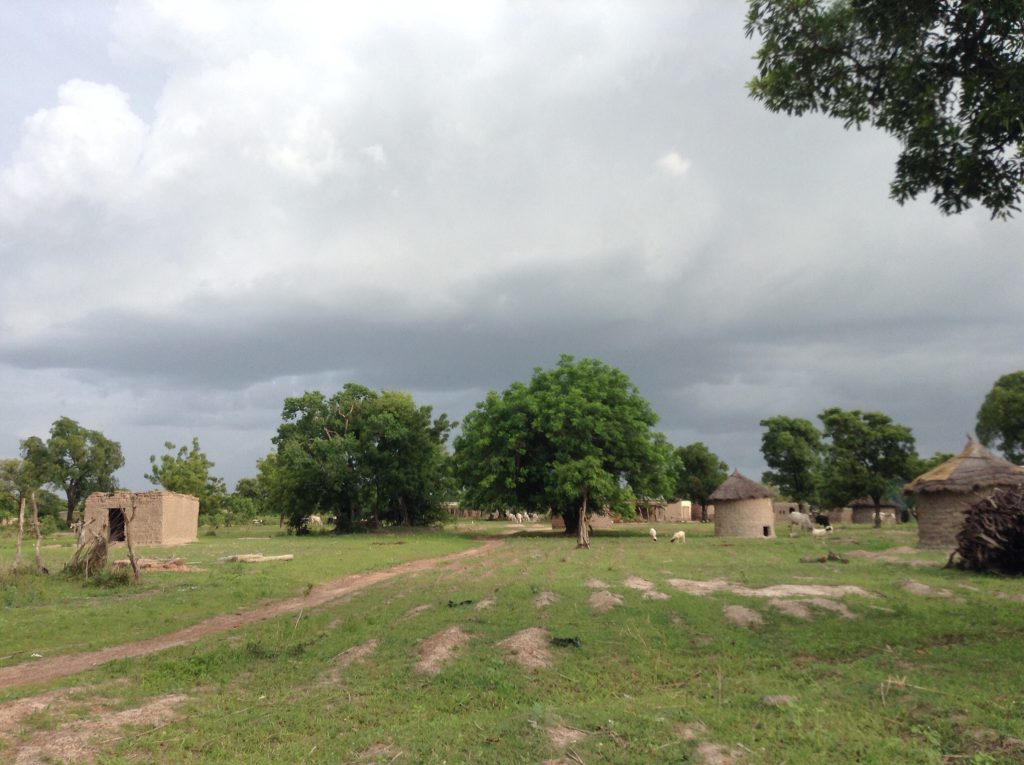
by Jenny Cordle [This is Part 2 in a series of posts about Jenny’s experience of learning about female genital cutting happening within the Malian community in which she lived. Part 1 details her stumbling upon the aftermath of a cutting in Konza.] As the editorial intern at Sahiyo, I’ve been reading the stories of women who’ve been sharing their experiences with female genital cutting with the world. Each story is so important, and reminds me of the stories of girls and women who shared their experiences with me during my time in Mali, West Africa. I lived in Mali from 2006-2009, but I went back in 2014 to work on a project about FGC within my community. Five years after my Peace Corps service, my old mud brick house in Konza was occupied and Mali was hotter than I remembered. I flew back to visit friends, but I also wanted to explore the impact female genital cutting (FGC) had on community members. Cutting in Mali is as ingrained in society as pounding millet for dinner. The Sikasso region of Mali in which I lived maintains a 90.9% prevalence rate of FGC. I had Kodak prints with me taken on the day of the cutting in Konza that I’d been privy to years prior. There were 21 girls of varying heights who gathered under a tree for a photo — all barefoot, and all wearing long fabric over their heads with colorful patterns of stripes, leaves, acorns and sunbursts. The girls in the group photo were adorned in head wraps, a symbol of their new status in the community as having been cut. They stood in a crescent shape in front of a mango tree. Only one adult woman out of the four present was wearing a long piece of solid white fabric covering her head. There was a lone silver tea kettle sitting in the dirt in front of them. Even though I can hardly look at the prints because of the emotion that’s palpable on their faces, it doesn’t occur to me that showing them to others during my search girls may be triggering for the girls in the photos. I remembered a meeting I held with the community elders in a round mud brick structure near the end of my time in Konza during Peace Corps. Women hardly ever attend these meetings, let alone call them and set the agenda. About ten men sat on the floor ready for my monologue. I’d worked for a year with Binta, the midwife and the only health practitioner in the community. She hadn’t been paid in six months. The community had given her grain for sustenance, but didn’t give her monetary compensation. Binta was in Sanso, a mining town with her husband, and wasn’t present for the meeting. I began by telling them that she works all hours of the day birthing their babies and burying placentas, as well as taking care of other ailments and injuries outside of her purview. They understood but expressed that they simply did not have the money to pay her. Paying her would involve pooling a small amount of money from every household in the community monthly. I paused. And then I let the words roll off my tongue in Bambara. “When cutting season comes, you find the money to pay the cutter to cut your girls, but you won’t find the money to pay the midwife.” The chief of the village, nearing 100 years old, had been lying on a cot. I was sitting on the edge. He bolted upright next to me and said, “Crazy woman!” to the men in the room. I laughed. I told them if they didn’t pay her they would not be receiving another volunteer. A few weeks later, they paid Binta for the full six months. They welcomed me into their community and I threatened them by conjuring one of their most sacred traditions. I felt powerless that young girls in the community were being violated and no one was doing anything about it to my knowledge. I also could not understand how you could avoid paying the midwife for birthing your children. I’m sure there are a myriad of reasons, not the least of which is that the community members live in one of the poorest countries on Earth. But my reasoning was simple: if you can pay a person to inflict pain in the name of tradition, then you can pay a midwife to ensure your wife and children have access to safe delivery. I had brought the printed portraits of the girls I photographed the day of the cutting in 2007, in hopes that I could interview them about their experiences with FGC. None of my friends could identify the girls. My translator suggested we try to interview the girls I photographed in a different series I also had with me called The Chair Portraits. Since the girls in that series lived in close proximity to me, my friends knew who they were and and where they could be found. Most of these girls were now teenagers who worked in the field all day. They too had all been cut years before. One had moved to another community to work in a gold mine. Another, Yaya Kone had gotten married and moved to a nearby village. Jemani Kone moved five kilometers away to Kouale, a nearby community on the main road to Sikasso. Several were still in Konza. Jenebou Kone was the first to agree to talk about how and where the cutting took place, and how it affected her. We walked to the northern part of the village for privacy and sat under a tree. I pulled out my RCA digital voice recorder and after she gave me her consent, I pressed record. (This blog is the second in a series of blogs meant to inspire a larger, global conversation about girls’ and women’s health and rights, cutting as a practice, and
When I found out my friend had undergone female genital mutilation

By Amy Vaya Country of Residence: Bahrain The first time I ever heard about female genital mutilation (FGM), I was 20 years old. A friend told me about a book she had read called ‘Desert Flower,’ by former model Waris Dirie, who had undergone the procedure as a girl. Even as she described it, I found myself utterly unable to comprehend such cruelty. Why on earth, I thought, would someone need to do that to another human being, much less a three-year-old child? I hunted down the book and raced through it in a matter of days, learning about her story with a growing sense of horror. Dirie thought it was normal to feel pain every time she urinated, because she had never known anything else. She never even realised she was missing body parts until, as a young woman, she saw her female roommate’s naked body. Both women wept. I wept. All these years later I still remember that book because it was so shocking to me that such a thing is practiced anywhere in the world. And then I put it out of my mind. It wasn’t until quite recently that the subject resurfaced in my life. A dear friend, who was just a passing acquaintance at the time, had posted online about how she had suffered FGM as a child. My mind raced back to this book and I was thunderstruck. It was one thing for it to happen to Waris Dirie in the 1960s in Somalia. It is quite another for it to happen in the 1990s, in the country where I live! I became extremely upset. Even though I did not know her that well, this became personal. She had been raised exactly as I had been, gone to similar schools, had mutual friends, and had similar interests. Our lives overlapped so much except for this one glaring fact—her bodily integrity had not been respected. She had been violated in the worst possible way. I watched videos about the Bohra community in which they discuss khatna with pride and I was disgusted. I thought of the other Bohra friends I’d had through my life and suddenly couldn’t see them the same way anymore. I felt like the women had been mutilated, whether they saw themselves that way or not. I was surprised at the men’s position. Perhaps they were ignorant of the fact this was even happening. The alternative–that they were deliberately inflicting this cruelty on their women–was just too much for me to stomach. I was so upset I spoke to my mother about it. And would you believe it, at her age, that was the first time she was ever hearing about FGM? That should tell you how little this subject is spoken about among communities. If we don’t talk about it, we can’t know it’s happening. And if we don’t know it’s happening, we can’t possibly stop it. FGM should never have begun, and it certainly has no place in the 21st century. Let’s be clear–the aim of FGM in my opinion was never ‘cleanliness’ or any medical benefit–it is purely to reduce or remove a woman’s sexual pleasure, and I fail to see how that benefits anyone. To the parents: If you think it will help you control your teenage daughter’s raging hormones better, think again. She is going to be a sexually mature adult for a lot longer than she is going to be an unmarried teenager under your roof. Do you really have the right to alter the rest of her life? Is ‘tradition’ even meaningful or important if it adversely affects the quality of life so much? To the men: I’d like to give you the benefit of the doubt and say that perhaps you don’t know this is going on among your womenfolk. If that is the case, then learn about it, and protest it. And protest it you must, because this does not benefit you. Do you really want to marry a woman who may never enjoy sex with you? Do you really want to be in a marriage where your wife never initiates sex because it doesn’t feel good or is downright painful for her? To the women: Keep going and be strong. You deserve to not have body parts removed without your consent. It is such a basic human right; it should go without saying. Your body is inviolable and you deserve for it to be respected as such.
31 US States Now Have Laws Against Female Genital Cutting, But Government Will Not Appeal in the Federal Michigan Case

On April 10, the U.S. Department of Justice decided not to appeal the November 2018 judgement by a US District Court which ruled that the federal law banning Female Genital Cutting is unconstitutional. The District Court had stated that FGC is a “local criminal activity” to be handled at the state level and that Congress did not have the authority to enact the federal law under the commerce clause. While the Department of Justice cites such technicalities as the reason behind its decision not to appeal the District Court’s ruling, it has also urged Congress to address the flaws and problems with the federal law against FGC so that it can be strengthened. The District Court’s ruling in November came in the case of Dr. Jumana Nagarwala and others, who were charged with performing/aiding female genital cutting in Detroit, Michigan, on nine minor girls. In positive news, however, 31 out of 50 states in the USA now have laws banning Female Genital Cutting after Idaho, Arkansas, and Utah passed laws to that effect in the past few months. The Idaho legislature passed a bill outlawing FGC on March 20, and the law will be effective from July. Utah state legislators unanimously passed a bill against FGC a week earlier, on March 14. Meanwhile, the law in Arkansas, passed in February, not only criminalises FGC but also provides for introducing awareness programmes about FGC.18 states in the US have yet to pass their own laws banning genital cutting for girls and women, which is now vital since the District Court has ruled that FGC is a state-level crime. Meanwhile, in India, a group of grassroots Muslim women’s organisations in India released a manifesto on March 28 for political parties to take up ahead of the 2019 national Parliamentary election in April and May. The manifesto includes the demand for a special law to ban female genital cutting in India. The Indian Supreme Court is currently hearing a set of petitions demanding a law against FGC, as well as a counter-petition defending FGC on the grounds of the constitutionally-guaranteed right to religious freedom. The liberal Muslim women’s groups that released their “women’s manifesto” hope that India’s leading political parties will commit to ending FGC in their own official election manifestos.
For survivors and their doctors: An online tool about female genital cutting
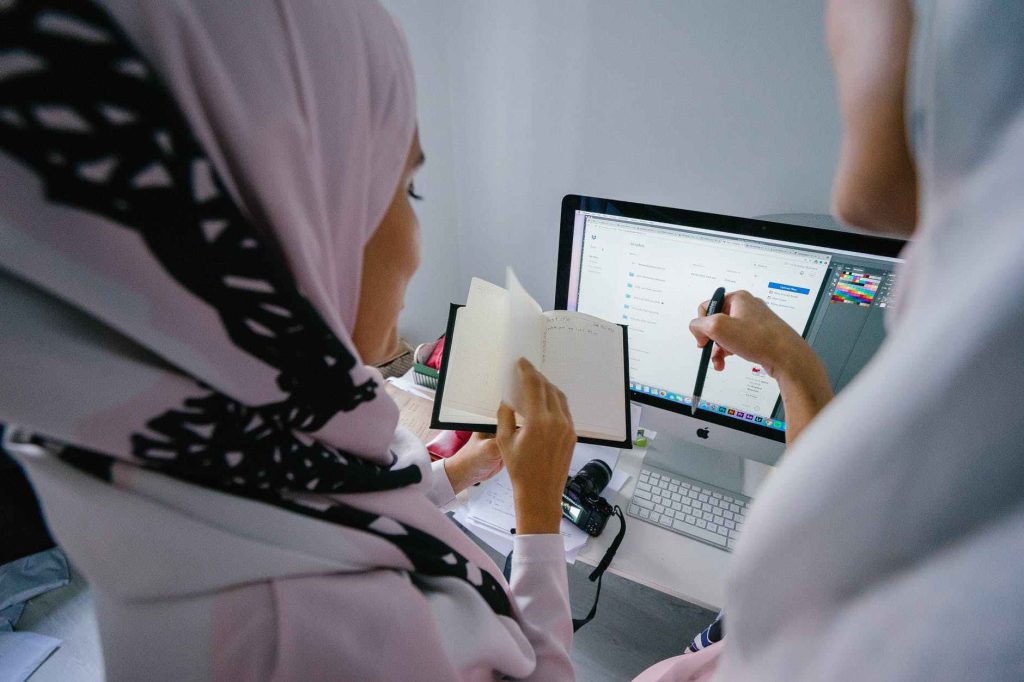
By Brionna Wiggins One day, fifteen years ago, while Karen McDonnell was teaching reproductive health at George Washington University (GWU), a student of hers was absent from the class. While that may not seem out of the ordinary, it was quite strange for this particular student. He was a diligent medical doctor from Guinea who attended the university for a Master’s in Public Health. He never missed a class before. Upon his return, Karen asked him if everything was okay. He told her that he had almost lost his wife. His wife had given birth to their first child, but when she was young, she underwent female genital cutting (FGC), and it caused complications during the delivery. No one knew how to properly care for her at the hospital while she delivered, and she nearly bled out. In short, those caring for her were unprepared for her case. “This isn’t something I was interested in yesterday,” Karen said, alluding to the years she’s spent on this project and reflecting on how far she’s come in understanding FGC. She remembers hearing about it in undergraduate school. Back then, FGC was simply an issue mentioned in passing during class. For the students in her graduate school at that time, it may not have seemed like there was anything to be done about it. “It’s a cultural practice, you can’t change culture. So let’s make it safer,” Karen said the instructors told students. The best solution at the time was medicalization, perhaps even providing clean blades. Karen knew that it still didn’t seem right and didn’t feel comfortable with the idea. The blade may be cleaner, but the potential health issues would remain. Karen pressed on working at George Washington University, spending decades focusing on domestic violence in her work. But the incident with her student sparked the motivation for advocacy. “That student changed my life in opening my world to [FGC].” Since then, Karen has worked with the former students and current students to educate others about how to care for those who have undergone FGC. She simply started by talking more in-depth about the practice with her students so they were made aware of the topic. Then two years ago, when the Office on Women’s Health came out with a funding mechanism for a medical project, Karen thought, Finally, we’re getting some attention here! They began working with survivors and RAHMA: a DC-based organization that addresses the stigma around HIV/AIDS in the American-Muslim community, as well as advocates against FGC. The team at GWU was awarded the health-focused funding to do work on a project that would teach other health practitioners how to give provisional care for those who have undergone FGC. Thus started the development of an online toolkit to educate women and healthcare providers on a topic that was once shrouded in secrecy. This toolkit is intended to be easily accessible and resource-filled with proper terminology and answers to questions that aren’t usually asked. The members of the team include a variety of survivors, advocates, health professionals, and others on-board with the multi-year program. In-depth interviews were conducted for both survivors of multiple countries and health-care providers that worked with survivors. The interviewers asked a myriad of questions: Tell us your experience? How did you get involved? If you had a toolkit, what would you want in there? What would you want providers to know? What do you want women to know? What’s even better is that women are coming forward with the willingness to share their stories, thanks to increased awareness and support from organizations such as Sahiyo that encourage them to do so. A turning point for these women had to do with their health: they started questioning why they had urinary infections and trauma they’ve carried since childhood. Beginning this conversation was the first step. The online toolkit is useful for survivors, their doctors, and others in the community. It will have an optimized search and curated content, which ensures that the information is scholarly, reliable, accurate, and useful for the website visitors. While doctors would ideally ask their patients about certain conditions that affect them, this resource can potentially fill in their gaps of knowledge when interacting with their patients. Additionally, the kit would cover essential concepts for survivors to ask health professionals. The team plans to have a community tool section that can be used by men and religious community leaders. Karen and many others are making a difference by working on this resource for survivors and their doctors. By understanding the complications that accompany their condition, it will ensure they receive proper support. More on Brionna: Brionna is currently a high school senior in the District of Columbia. She likes drawing, helping others, and being able to contribute to great causes.
The complexities of female genital cutting (FGC) in Singapore: Part II

Part II: Cleanliness and religious reasons for FGC By Saza Faradilla Country of Residence: Singapore This blog post is the second in a four-part series about female genital cutting (FGC) in Singapore. This second installment explains two of the five reasons raised by my interlocutors about FGC in Singapore: cleanliness and religion. (Read part one here.) While medical practitioners confirmed that the cut has no effect on cleanliness, Muslim interlocutors believed it still helps with cleanliness, which was pivotal to their religiosity. Religiously, FGC is expounded upon in a hadith (record of the traditions or sayings of the Prophet Muhammad), but there have been various interpretations of this hadith. Institutionally, the Islamic Religious Council of Singapore (MUIS) has avoided releasing any official statements on the religious mandate of FGC for the Muslim community. This second installment explains some of the reasons the interlocutors provided for practicing FGC – cleanliness and religion. Reasons for FGC Cleanliness The first reason some interlocutors (especially those who support FGC) shared is that of cleanliness. They believe a part of the vagina traps dirt and needs to be removed, which makes for easier cleaning. To them, this high hygiene standard is particularly crucial for prayer. The evocation of religion is significant here because it shows that my interlocutors actually view religion as the reason for FGC, and that cleanliness happens to fall under that umbrella. However, the practitioner I spoke to disagreed and said that there are no medical benefits to FGC because the “cut is so small, it doesn’t affect anything”. I believe the perceived idea of cleanliness and purity arises out of a misunderstanding of the cut and its specificities (amount cut, area cut etc). Religion According to Amnesty International, “FGC predates Islam and is not practiced by the majority of Muslims, but has acquired a religious dimension”. For most of my interlocutors, their belief in Islam is an extremely important reason for FGC. I will first explore the ways my interlocutors linked FGC to Islam through the evocation of several hadiths and mazhab (Islamic jurisprudence, usually referring to specific Islamic teachers), and then go on to engage with different readings of these hadiths, and also discuss the position that religious authorities and leaders have taken with respect to FGC in Singapore. One of the hadiths that was alluded to by many of my interlocutors is the one told by Al-Baihaqi: “There are a group of people who allow cutting for women by referring to the hadith where Um Habibah was cutting a group of women. On one day, Prophet Muhammad visited her and found a knife in her hand (for cutting). Prophet asked and confirmed that the function of that knife is really for cutting. Um Habibah asked, “Is cutting for women haram (forbidden)?” Nabi (Prophet) Muhammad said, “Oh women of Ansar, do the cutting but be sure to not cut too much.” My interlocutors who support FGC said this hadith provided a clear approval of FGC from Prophet Muhammad, as he did not try to stop Um Habibah from cutting other women, but actually endorsed it. Not all my interlocutors were able to provide exacting details of this account, and they mention the details to varying extents. Most know of this as hearsay. On the other hand, protestors of FGC interpret the hadiths and religious instructions differently. With reference to the same hadith above, Dalia said, “The fact that Prophet Muhammad came across this proves that it was already an Arabic tradition that was pre-Islamic. A lot of things that were already happening, the Prophet did not stop. He was trying to win over the Qurayshi people and so he could not exactly stop them. But the fact that he said to not take much means he already disapproves of FGC”. I was keen to interview someone from MUIS (Islamic Religious Council of Singapore). Although repeated emails to them went unanswered, I found a past fatwa where MUIS strongly endorses FGC as part of the Islamic tradition. “According to the majority of ulama, circumcision is compulsory for men and women. It should be done early in life, preferably when still an infant, to avoid complications, prolong [sic] pain and embarrassment if done later in life. Any good Muslimah doctor can perform circumcision for women.” However, this fatwa was removed from the website in recent years, and MUIS has not since provided a reason for the removal or replaced it with another fatwa. From my research, it is evident that religion is a significant reason for those who practice FGC. Indeed, religion is used to justify FGC around the Muslim world. It is notable that the same hadith is interpreted very differently by both proponents and opponents of FGC. In my concluding paragraphs, I will discuss the policy implications of MUIS taking an ambiguous stance toward FGC and urge them to produce a clear directive. Part III of this series will focus on more reasons for the justification of FGC, including tradition and the control of female sexuality within patriarchy. Saza is a Senior Executive of service learning at Republic Polytechnic in Singapore. She recently graduated from Yale-NUS College where she spent much of her college life developing her thesis on female genital cutting in Singapore. A highly under-researched, misunderstood and personal issue, Saza sought to understand the reasons behind this practice. Saza is passionate about women’s rights and empowerment and seeks to assist marginalized populations as much as possible.
Female Genital Mutilation: A Human Rights Issue?
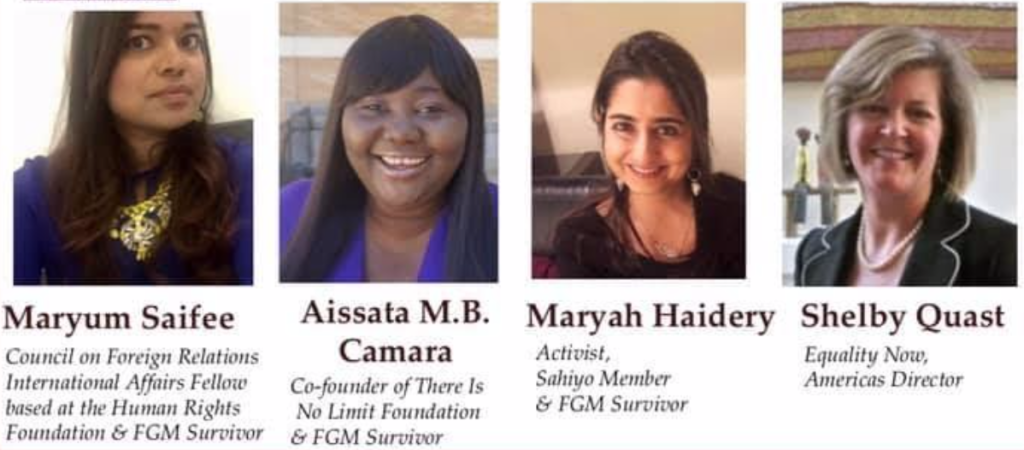
By Maryah Haidery Country of Residence: United States Last month, the Columbia University South Asian Feminisms Alliance organized a panel discussion in New York City to discuss female genital mutilation (FGM) in the broader context of human rights. I was honored to represent Sahiyo at this panel alongside Maryum Saifee, an FGM survivor and career diplomat with the United States Foreign Service; Aissata Mounir Camara, Co-founder of the There Is No Limit Foundation; and Shelby Quast, Americas Director of Equality Now. The event was scheduled for a frigid Friday afternoon and I was only expecting a handful of people to attend. But when I finally made my way to the School of International and Public Affairs, I was pleasantly surprised to find the room was packed with students and reporters interested to hear what we had to say. The event began with a screening of three short videos highlighting Maryum’s, Aissata’s, and my personal history with FGM. After some brief introductions, we began a very impassioned hour-long discussion about our individual experiences as activists. Maryum began by stressing that it was important to view FGM as not just a cultural or medical issue but as a fundamental violation of human rights, including the right to live a life free from violence – especially gender-based violence. Shelby was particularly insightful about the legal implications of overturning the federal constitutional ban on FGM in the Detroit case and the subsequent appeals process. Aissata was passionate about informing the audience that FGM was “not just an African problem” but a growing problem here in the U.S., and one that affects all types of women regardless of ethnicity, age, religion and socio-economic status. Keenly aware that I was lacking the extensive background and experience of my fellow panelists, I nevertheless tried my best to represent Sahiyo by discussing some of my recent initiatives, as well as some of the issues inherent in this sort of work. In keeping with the theme of the event, I discussed the challenge of framing FGM as a human rights issue. Some people hesitate in calling FGM a violation of human rights because they view rights through the lens of cultural relativism. Cultural relativism is the idea that right and wrong is subjective and varies based on culture. According to this view, definitions of human rights based on “Western” ideas, such as the UN’s Universal Declaration of Human Rights, can only apply to people from “Western” cultures, and different standards should be used to judge the practices of people from “non-Western” cultures like Dawoodi Bohra Muslims. Unfortunately, many politicians who have this view feel that supporting a ban on FGM may appear culturally insensitive. I told the audience that although I felt that such views were understandable and often well-meaning, they were fundamentally flawed. This is because concepts such as “right and wrong” and “human rights” are not subjective but objective. They are based on the things that humans need in order to live and flourish. While it might be true that the human rights guaranteed in the UN’s Declaration of Rights are based on “Western” ideas, they are universal and meant to apply to all humans, not just the ones born in the West. So, if you adopt a culturally relativist position and contend that universal human rights don’t extend to certain Muslim women, then you are essentially arguing that you don’t think that certain Muslim women count as “human.” It’s not hard to see why this would be wrong. At the end of the discussion, we responded to several questions from the audience. It was heartening to see how engaged everyone was. Someone asked how important we thought changing the existing laws would be for ending FGM. I answered that while laws could be important in underscoring our nation’s commitment to protecting the rights of little girls, laws alone would probably not result in changing the culture. That is why engaging with people and educating them is also so important. Shelby emphasized that laws were helpful in bringing exposure to previously taboo practices. But she also warned that it was important to ensure that laws were implemented in ways that helped communities instead of targeting them. Several people were interested in finding out what they could do to help end the practice in their communities. Maryum urged audience members to educate themselves on the issue and pursue creative solutions. Camara agreed. “Knowledge is power,” she said. “Educate yourself. Break the silence. Find your talent and join in.” After the event, nearly everyone took home information on how they could support the various organizations represented, find upcoming Zero Day of Tolerance Activities, or sign a petition to ban FGM in Massachusetts. It was a day that seemed to exceed all expectations.
The complexities of female genital cutting (FGC) in Singapore
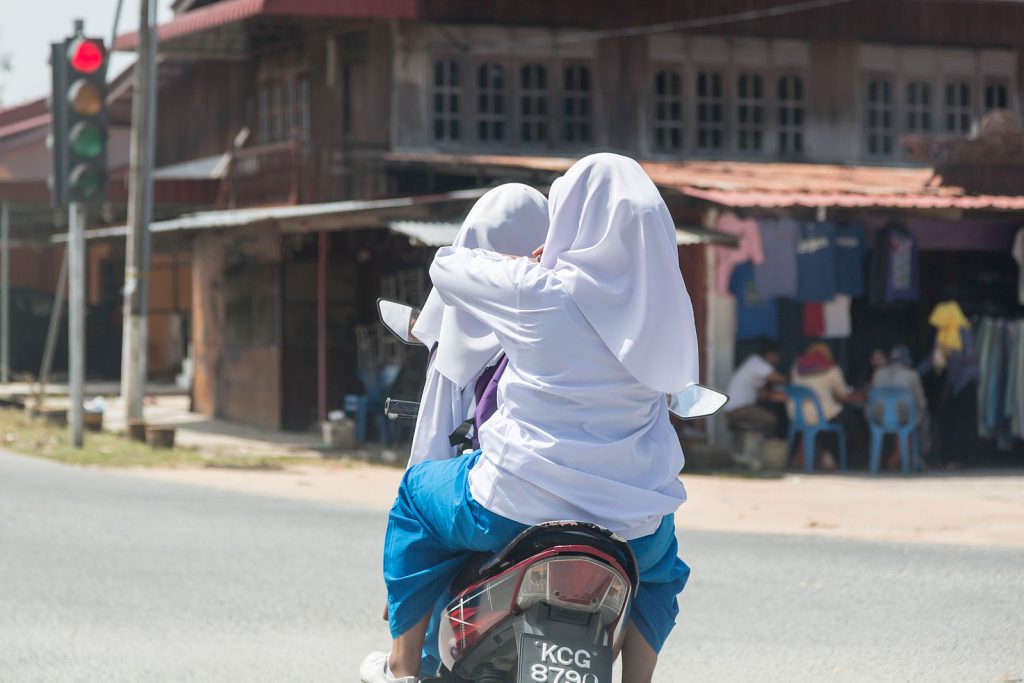
By Saza Faradilla Country of Residence: Singapore This blogpost is the first in a four-part series about female genital cutting (FGC) in Singapore. This first installment details the historical, social and economic contexts of FGC in Singapore. It also explains the limitations of academic discourses on FGC in the Southeast-Asian region, and especially Singapore. It was a Saturday afternoon in September 2016 when my dad picked me up from university and we headed over to a relative’s house in Sembawang. We only ever gathered there for special occasions. This time, it was my cousin’s second birthday. We entered the room, and it was full of relatives in brightly colored shirts, jubah (long Malay dress), jeans and scarves. Of course, the star of the evening, my 2 year-old cousin, Anisah, donned a red and blue sailor outfit. I went to pick her up and carried her around the room. A 38-year old female relative, wearing a simple combination of black t-shirt and jeans came over to speak to me, and my sister, who was also around us. Relative (R): “Anisah minggu lepas dah kena sunat (Anisah was cut last week).” Saza (Sa): “Apa? (What?)” R: “Ya, kat doctor (Yes, at the doctor).” Sa: “Huh, perempuan kena sunat? (Women need to be cut?)” R: “Ya (Yes).” Sa: “Tapi ini salah! Ini against WHO guidelines semua. Ini human rights violation (But this is wrong! This is against WHO guidelines. This is a human rights violation).” Sis: “You pun kena sunat. (You were cut, too).” My jaw dropped. I had never known about this cutting, and I was completely unaware that it was performed on me. I did not know it was performed on young children, and consented to by their parents at medical clinics or with traditional midwives. My complete lack of knowledge until that moment about a practice that my relative described as necessary for women speaks a lot to the specific kind of female genital cutting (FGC) in Singapore: its hiddenness, prevalence amongst the Singaporean Malay community, the debate surrounding the procedure, and reactions to it. This sparked an interest in researching about FGC for seminars during my undergraduate studies at Yale-NUS in Singapore, which eventually culminated in a year-long thesis on this practice. Context of FGC in Singapore It is unclear when the practice of FGC first began in Singapore. In 1998, researchers Andre Feillard and Lies Marcoes theorised that FGC reached Southeast Asia as part of Islamic traditions linked to the Shafi’i school of thought, but the spread of the practice to other parts of Southeast Asia is ambiguous. FGC in Singapore involves female Malays, who make up about 7% of the population (420,000 people). Out of these, there is an assumed prevalence of 60% of Malay women who have been cut. Previously, this procedure was performed by traditional midwives at homes, but now it is mostly conducted at 5-10 private clinics by female Malay doctors around the island. It costs about $30-50, and takes less than 30 minutes. There is no law or legislation banning FGC in Singapore. In Singapore, Type I FGC is performed, though there is also a spectrum of this particular cutting – from symbolically placing a medical instrument (usually scissors) at the clitoris, to nicking the clitoral hood, to removing the hood itself. It is usually performed on young children below the age of five. The Malay community holds differing views relating to this cutting. Some view it as mandatory, while others are more ambivalent, and some actively campaign against it. Research (or lack thereof) on FGC in Singapore FGC in the Southeast Asian region received very little academic attention until 1885. Andree Feillard and Lies Marcoes argued that it was only in 1885 that the Dutch ethnographer G. A. Wilken conducted a thorough survey of the practice in the region. He was the first to draw the conclusion that female circumcision was found exclusively among Muslims, which led him to believe that it was not an indigenous practice, but rather one “borrowed from the Arabs”. In the only anthropological study of FGC in Singapore, Gabriele Marranci (an Australian anthropologist) explained why this practice is so hidden. He suggests that this is a form of “religious ethnic resilience within an environment affected by an increasing push towards globalisation and national identity”. According to him, the structural inequalities faced by the minority Malay community have led them to hold strong to traditional rites and rituals as a way of ensuring the togetherness of the community. Here, he also references Kevin Hertherington’s concept of the Bund, which is defined as “an intense form of affectual solidarity, that is inherently unstable and liable to break down very rapidly unless it is consciously maintained through the symbolically mediated interaction of its members”. Secondly, he also points out that the government is keen to keep FGC hidden to avoid “opening a debate in Singapore that would not only involve the Malay Muslim community, but all Singaporeans as well as international observers”. Taking a pro-FGC stance would upset the international human rights community such as the United Nations and NGOs as well as receive backlash from the local feminist community. On the other hand, criticising FGC might be seen as an “attack on the Malay community itself”. A third reason is that the Malay Muslim community do not see this cutting as significant or think it necessary to be brought up for discussion. It is a tradition that is simply accepted as part of an early childhood ritual. However, Marranci does not clearly address the idea that if the cut is so hidden such that the women themselves are unaware of it, how does that solidify the identity of the community? As such, my research aims to build upon this question by understanding the reasons that compel Malays to practice female genital cutting. Part 2 of this series will focus on cleanliness and religious reasons given for female genital cutting in Singapore. Saza is a Senior Executive of service learning
Mariya Receives Human Rights Storytellers Award
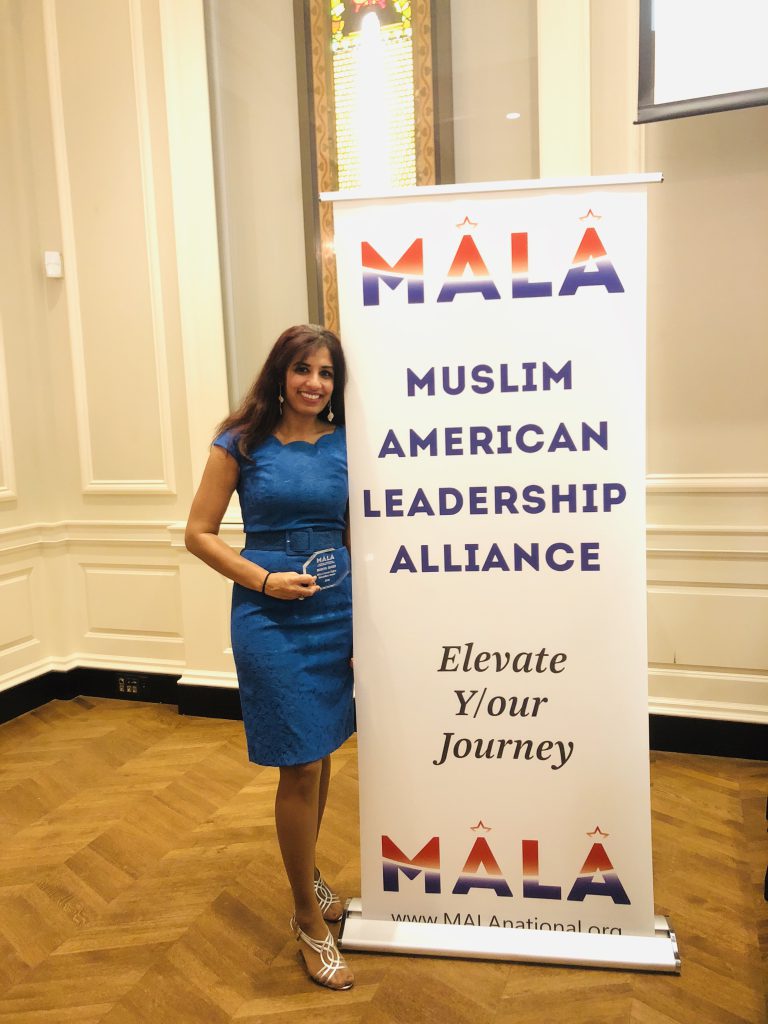
The Muslim American Leadership Alliance (MALA), a civic and community organization committed to promoting individual freedom and diversity, and to celebrating Muslim American heritage, honored Sahiyo Co-founder, Mariya Taher with the first annual MALA Human Rights Storytellers Award. This award recognizes Mariya and Sahiyo’s outstanding contribution to defending human rights through storytelling, in particular, working to protect women’s bodies from cutting – and bringing together women who have been cut on a journey of healing and empowerment. The award was given in recognition of the U.S. Sahiyo Stories project and the Human Rights Storytellers Award was presented to Mariya at MALA’s Third Annual Gala at the Chicago History Museum on November 6, 2018. Read more at MALA’s Third Annual Gala Honors Leaders, Storytellers.
A 17-year-old girl passes away due to circumcision in Egypt

Is circumcision really as harmless as it is made out to be? We woke up to a sad news yesterday as a 17-year-old girl, Mayar Mohammad, died of severe bleeding caused by circumcision surgery in Suez, Egypt. The practice of female circumcision or any form of female genital cutting (FGC) has been banned in Egypt since 2007 and this procedure was carried out illegally on Mayar in a private hospital. Earlier in Egypt, a doctor’s license was revoked for killing a 13-year-old who died of similar circumstances due to a circumcision surgery. Even then the practice continues to exist, shifting more and more towards medical professionals carrying out FGC illegally. While many people quip about the differences between circumcision and female genital cutting, these instances are a reminder of what the procedure could also lead to. A poignant reminder that circumcision within the Dawoodi Bohra community, too, is seen as a cultural imperative and that these days the practice is increasingly shifting to gynecologists who belong to the Bohra community and who believe that there is no harm in carrying it out on young girls. “Often the practice of Khatna, Khafd or Sunnat is brushed away, stating circumcision (which also falls under the category of Type 1 FGC) to be incomparable with more severe forms of Female Genital Cutting commonly known to be practiced in Africa, although some African countries practice less severe forms too, depending on the ethnic tribe involved.” The community in Egypt is known to practice circumcision and not other severe forms of mutilation, but it is hard to say what must have been the extent of cut due to which Mayar lost her life. This also holds true with Khatna among the Dawoodi Bohras. Even though it is believed to be a small nick or cut, who can claim that the procedure might not lead to severe hemorrhaging? Or because of the child’s writhing one might cut off more than necessary by accident? As Sahiyo, we feel extremely sad to hear about this development and want our audience to ask themselves the following questions: Can one be absolutely certain that while Khatna is performed, more than the supposed required amount of skin doesn’t get cut off by design or by default? Just because some communities have begun to medicalize the practice, does that mean khatna holds ground scientifically, particularly when the World Health Organization has come out against all form of FGC? Is it okay to violate a girl’s rights to her body without her consent? This incident raises many more questions and we hope our readers will continue the dialogue on these issues, either by posting a comment or writing to us at info@sahiyo.com. Meanwhile, In a moving facebook post Mayar’s friend went on to blame the mother. “Mayar died due to ignorance and backwardness of her mother, who regarded her daughter as guilty only because she was created a female,” Rawan Al Jamal, classmate of the victim, mourned her in a Facebook post. Whether the mother is to be blamed or the doctor or the system which has made the practice mandatory; sadly Mayar no longer is alive. Read more about the incident here. Also read Daily Mail report here
